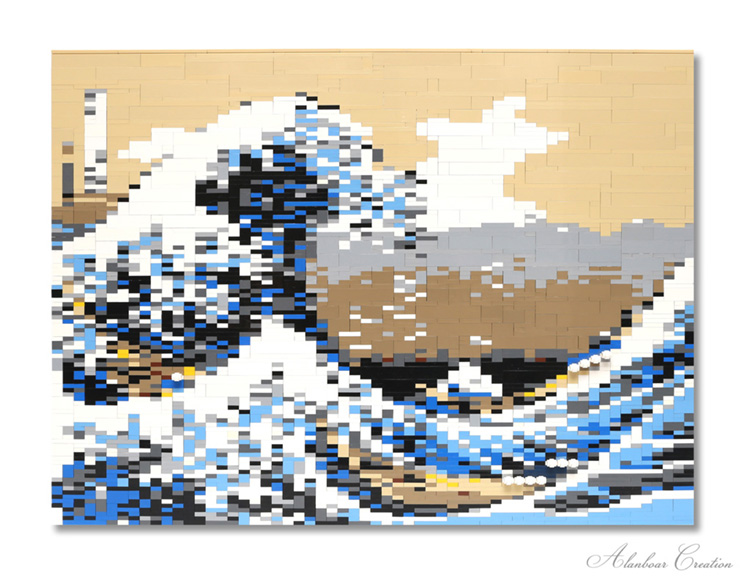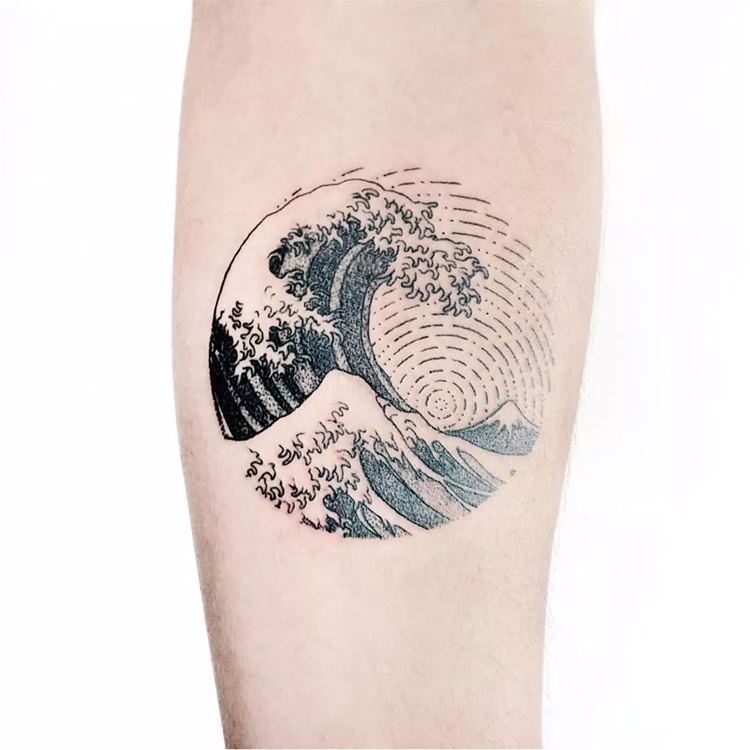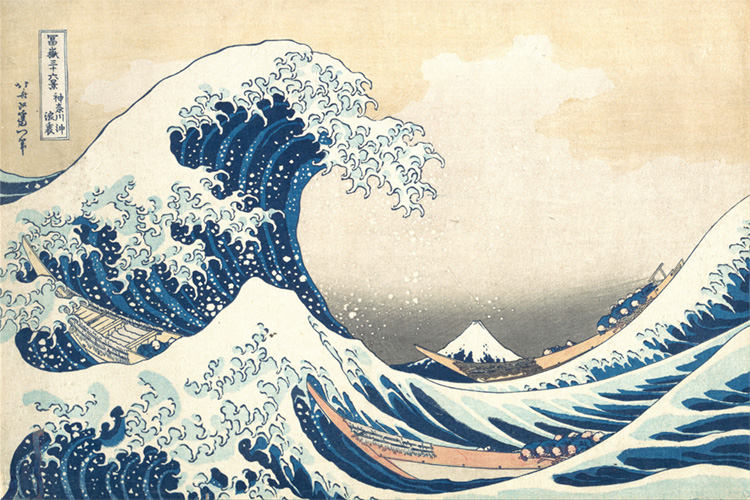It is one of the most recognizable Japanese artworks in the world, and it was created in the 19th century.
"The Great Wave off Kanagawa" is a 10.1'' × 14.9'' (25.7 × 37.8 centimeters) woodblock print painted by Katsushika Hokusai, a Japanese ukiyo-e artist.
Hokusai's most famous work depicts a giant wave about to smash three small boats navigating off the coast of Kanagawa, with Mount Fuji rising in the background.
Kanagawa, now known as the city of Yokohama, was a former Japanese seaside prefecture located on the outskirts of Tokyo.
With "The Great Wave," the artist wanted to illustrate the power Nature can have on human life - the tentacles of the ocean about to claim a few lives.
Let's dive into the stunning piece of art that has become a global phenomenon.
1. "The Great Wave" was released somewhere between 1829 and 1833 as the first print of the "Thirty-six Views of Mount Fuji" series;
2. The actual title translates to "Under the Wave of Kanagawa";
3. Although commonly considered a tsunami wave, it is supposed to be a rogue wave that catches the fishermen off guard;
4. Mount Fuji, which appears in the center of the print, is considered a sacred symbol of Japanese identity;
5. The dark tones around Mount Fuji seem to tell the observer that the scene takes place early in the morning, as the sun rises from behind the viewer, illuminating the snowy peak of Japan's highest mountain;

6. The boats pictured in the legendary print are oshiokuri-bune, fast boats used by fishermen to transport fish from Izu and Bōsō to the markets of Tokyo Bay, formerly known as Edo Bay;
7. The signature of the Japanese printmaker can be found in the upper left-hand corner. It reads: "From the brush of Hokusai, who changed his name to Iitsu";
8. It is estimated that between 5,000 and 8,000 prints were made of "The Great Wave off Kanagawa";
9. "The Great Wave" was one of the many images created by ukiyo-e printmakers to be sold to a growing Japanese middle class. It cost the equivalent of a noodle soup;
10. "The Great Wave off Kanagawa" is influenced by Western painting techniques, including the illusion of depth, a low horizon line, and the appearance of Prussian blue, the first-ever modern synthetic pigment;

11. Hokusai has always been fascinated by the movement of water, and the topic was explored continuously throughout his career;
12. Before developing "The Great Wave off Kanagawa," Hokusai created two prints that served as inspiration for the famous illustration: "Kanagawa-Oki Honmoku no zu" (circa 1803) and "Oshiokuri Hato Tsusen No Zu" (circa 1805);
13. Hokusai (1760-1849) was already 60 years old when he created his most famous print;
14. When Hokusai's work was shown at the 1867 International Exposition in Paris, and 22 years after his death, his prints were admired and collected by many fine artists like Claude Monet, Vincent Van Gogh, and Edgar Degas;

15. "The Great Wave inspired Claude Debussy's orchestral composition "La Mer" (1903-1905);
16. "The Great Wave off Kanagawa" was adopted by modern Western culture and can be seen in a wide variety of situations, including t-shirts, tattoos, emojis, contemporary artworks, beer ads, book covers, etc.;
17. In 2009, based on the size of the oshiokuri-bune boats, scholars Julyan H.E. Cartwright and Hisami Nakamura concluded that the plunging breaker measures between 32 and 39 feet (9.7 and 11.8 meters);
18. It is believed that the tsunami that hit northern Japan in 1896 helped make "The Great Wave" an internationally recognized work of art;
19. The Metropolitan Museum of Art of New York City, the Los Angeles County Museum of Art, the British Museum, and the National Gallery of Victoria are some of the institutions that own original impressions of the iconic print;
20. The original Japanese title is 神奈川沖浪裏;
